It’s more than likely that, in the recent past, you’ve seen a film. It’s equally likely that you’ve watched an episode of anime. It likely wouldn’t surprise you if I were to state that both have much in common. This, we assume, is a given; both are distinctly visual media. After all, in spite of their numerous differences (voice-acting, acting, audience), what strikes us first and foremost is that the objects of fascination in both are images. We don’t read, we don’t listen, and we don’t even partake in; we saw, we’ve seen, we’ll see[1].
When we see, it’s always through some type of lens. Visual media possess a strange quality in that regard: the lens of our eyes process what has gone through a lens previously. This previous lens is the camera. Cinematography and photography, the arts of manipulating what are processed by the camera lens, are central to the creation of any visual work[2]. We cannot have something visual without a lens influencing what is seen.
Immediately, we notice something strange in this claim. Whereas live-action film has a camera, animation does not. That is to say, there is no physical device that corresponds to a camera in animation. Yet, we still talk about a show’s cinematography as though it were viewed through a camera. While this contradiction is seemingly innocuous, the institution of a virtual camera is of extreme consequence not only in the production, but in the perception of a show. We will call this virtual camera, the anicamera.
As we will come to see, the anicamera is fundamentally different from the camera. It holds utmost importance within the creation of the work, for without it, the work cannot exist in any form whatsoever. As an extension of this, it is an indispensable tool in the reception and analysis of any given work, as the invocation of the anicamera and the presence of objects within the frame are undeniably connected on a symbolic level. Cinematography, as a result, is fundamental in our processing and criticism of animation.
Both the anicamera and the camera share the same purpose: they enable an image to be saved and presented. The similarities end there. For the anicamera does not physically exist as does its counterpart. Whereas the real camera is bound by laws of physics and has a physical presence, the anicamera shares no such limitations. In fact, the anicamera is conceptual, created to easily reconcile the immaterial with the material, along with all of the camera’s functions and capabilities. An example of this reconciliation is easily seen in the storyboard notes for Mahou Shoujo Madoka Magica, where the storyboards explicitly state “PAN DOWN.”
As the anicamera bears no physical presence, neither does what it depicts. Unlike the camera’s role in live-action in recording an image, the anicamera is concerned largely with the creation of an image. Whereas it is possible to consider the live-action film without recording it[3], this is not possible for animation. Animation comes into conceptualization as it is framed, and only when it is framed. The virtual presence of the anicamera is therefore taken as a given.
The anicamera can then be said to encompass the entirety of frame in a show: the anicamera’s frame is indistinguishable from the material within it, for the material exists within and because of that frame. Everything in the image, from characters moving to off-model drawings, is given form by its consideration to the anicamera.
Along with this comes the intent of, and possibility to read meaning in, the frame. For example, let us say there is a rabbit inside a hat in a white room. However, the hat is two meters tall and has a cross sectional circumference of one meter. Conjure a mental image of the scenario, and remember it. We will refer to this mental image as a shot. In whatever manner the shot is framed reveals what is thought to be important within the reality. If the shot is framed from the ceiling, what is important is the fact that the rabbit is inside a black circle and that they exist; we’ve no mention of the room. Changing perspective, framing the shot from within the hat looking upwards, while we still don’t know that we’re in a room, we might feel sympathy for the rabbit. Why and where is it stuck? How did it get there?
We’ve fully entered the realm of cinematography. Or more importantly, we’ve established that cinematography is central to a criticism of animation. All references to the anicamera include, by necessity of the word “animation” itself, a reference to the functions of its real-life counterpart, the camera. It is impossible to assess a work of animation without assessing the cinematic qualities inherent within it.
—
Notes
1. [^] As used in colloquial language.
2. [^] One might argue that painting, theatre, and manga are all counter examples. This is not so. Painting always takes on a perspective, and is therefore reliant on a frame and virtual camera of its own. Theatre and manga actually both have analogous functions to cinematic works: the spotlight in theatre is analogous to close-ups in film, the closing of curtains to an abrupt cut in scene; for manga, panels are shots and the white space are transitions. While this is a gross simplification of the analogous functions, I feel it retains the essence of the possible discourse.
3. [^] Consider that the actors that create the scene are all capable of acting without the presence and recording of the camera. This is a contentious point that will warrant further discussion, but the possible dialogues do not invalidate the difference between physical and conceptual presences.

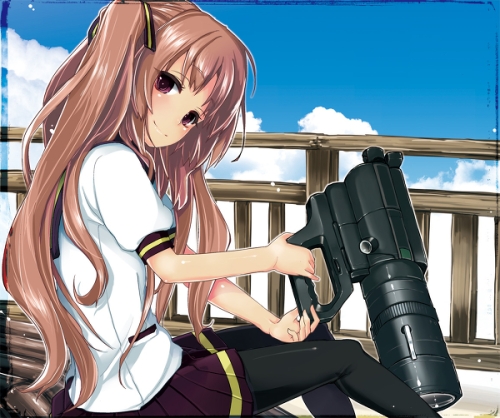


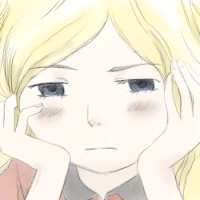
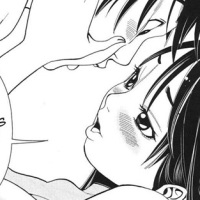
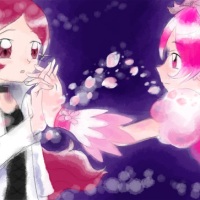

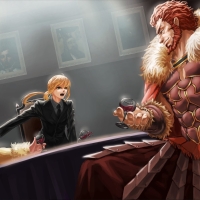






Great post. This subject is too often ignored or merely grouped in with “animation.”
In fact, I’ve found that few people take notice of cinematography until it becomes detrimental to a show or movie. It’s only when you understand you’re watching two talking heads that you realize the importance of cinematography.
This is also an area which anime excels in compared to live-action films. You refer to the anicamera as conceptual; it is not bound by the laws of physic–only the creator’s imagination. Animation will forever hold this advantage over live-action recordings. It’s this unlimited creativity that often times sets anime apart and defines it as a visual medium.
It’s an interest point you bring up, in that cinematography is often only seen when it is bad, something manifest in the anisphere’s discussion about the first episode of K. Cinematography is largely meant to be unnoticed, and thus sticks out in two cases: being done horribly (K) or being done innovatively (Bakemonogatari). From mediocre to excellent, it is most often unrecognized (Paprika, [C]). Since most people aren’t specifically looking for cinematic elements, they often fly by unseen.
I’ll be addressing your second point in a later post. Suffice it to say, there’s an interesting discussion in how realistically the camera behaves within most anime.
One thing I find striking about certain anime is the way the characters are actors, even before the images have voices. They move, they have facial expressions. Lacking bodies, they still have body language. That’s remarkable, and some animators are extremely good at having their characters act.
There’s another aspect of the animated image that differs from the shot-from-live-action one: there is nothing on the screen that was not consciously put there by an artist. It’s presence in the shot is not an accident (though it’s easy to have an inflated view of how much serendipity actually happens in front of a movie camera — almost everything on film is also there because someone arranged for it to be there, in this shot).
Finally, at the risk of being too literal, you must seek out the anime Flag. The way it is seen through lenses will give you yet more to think about.
The fact that everything on screen is consciously placed by an artist is absolutely mind-boggling. It really helps you appreciate the attention to detail that some anime display.
Absolutely, it can be said that characters in anime are actors. Though, at the same time, it’s fascinating the avatar role that the animated image holds in its acting. It is an avatar that is designed to act, yet has a second layer of voice-acting behind it.
It gets even more interesting when we consider that while both the voice acting and character actions/movements/designs are by and large exaggerated, the behaviour of the camera has become more and more /realistic/ (with some exceptions). This contradiction in means, I feel, is the draw of anime.
And the created-ness of the image is exactly what I was getting at. It’s great, isn’t it? That everything that goes into an animated image must go into it controlled? While live-action film as of 2008 onwards has been reaching close to these levels with advancements in special effects, there’s still a camera. This camera means we’re seeing images of things, rather than images of imagined things as in animation.
Reblogged this on compass on my field trip.
*Very* insightful post! Different media often have somewhat similar “ends,” but different means of achieving them, due to their limitations and assets. What I mean to say is that I think I really have experienced the conceptual tension of camera vs. animecamera in other media. It merely takes other forms.
Examples may, perhaps, be found in realist fiction, such as Flaubert’s Madame Bovary. In that case we often see a tension between subject, object of description, and the physical means of description—for all the super-specificity we expect from realist novels. In a couple of my blog posts I reference a description of chickens in a barn, actually described *as if they were a blur* in a photograph. It reminds us that the narrator is *not* objective (i.e. “God”), though we assume him to be. He’s really an “impartial” human being, even though he seems to have mysterious access to the thoughts of characters. What an odd conundrum!
What I’d like to figure out is whether the analogue of animecamera exists in literature. What do you think? I’ll give it some thought, myself; I want to get back to you on that one.
One of the reasons I left the discussion of books out is because they’re extremely difficult to simplify in terms of cinematic quality. Such examples as the hard-boiled detective and noir novel spawned from fascination of movement and the film-like quality of it, and thus necessarily parallel peacefully with film. Whereas, should we look at the example of Catcher in the Rye, its cinematic quality is difficult, if not impossible, to discern. What it comes down to, as you mentioned, is the method by which qualities are given to description. While an abstraction, what is “cinematic” is most generally acquainted to physical movement in the context of some type of framed tension (the camera). Thus, specificity comes naturally, as the camera focuses what can be seen at all.
On to the topic of whether the anicamera, or any such thing like it, exists in written literature. I would say no. For what I constitutes a camera is two-fold: physical visibility of an image and framing. In visual media, the image is immutable, although what can be taken from it is plural. Literary description’s fascination takes place in the mind, and the actual framing varies between minds. However, analogous structures /do/ exist between the two: paragraphs could be shots, description could be voice-over. There is just no virtual camera as exists in visual media.
One thing I notice about the anicamera is that there are some shows that keep the anicamera zoomed very close to a character. This is often how the animators cut corners, because a zoomed in object means you have to draw less of the character.
To add to one of the above comments, I think the ‘actor’ for any given scene is the person who draws it. They have to use their own life experiences and knowledge to make this drawing come to life. Though it may be better to say an animator is a puppeteer, and their pencil is the string. Through their pencil can they make their drawings come to life.
Budget saving is an interesting aspect of animation. Where on one hand, we get horrible cut-and-paste sequences such as we’ve historically (and rarely) seen in Gundam and Macross, we also sometimes get gems of animation techniques like we observe in this season’s OniAi.
I’d hesitant, however, to ascribe the “actor” behind any given drawn character. While I haven’t directly addressed it in the post, a significant aspect of anime is voice-acting. This has a huge effect on how a character is perceived (Senjougahara and Chiwa Saito), and I would still call the voice actor a secondary actor. The animator and the voice-actor are two prime suspects as to the nature of a frame’s “acting”. However, while the animator does indeed draw and “create” a character in a way, there are myriad other aspects to consider in animated “acting.” For example, the director may have a great deal of power in the creation and force certain interactions. The writer(s) may demand a character to act in a certain way. Anime is a highly departmentalized art (similar to film), and I hope to explore this aspect further in later posts. For now, I think that to consider the animated character as an actor in and of itself might be best.
Wait, nobody is going to say “anime does have a camera”?
OK yes I understand. I actually disagree strongly with a couple points here (or rather, I think they might be factually inaccurate) but the overall concept is quite important when thinking about animation.
Excellent. Do you mind pointing out what points you contend against? Part of this post’s purpose was to help me refine my ideas, and I’d appreciate any argument or criticism against this framework.
Not so much criticism, but let me just generally state what should be considered in your overall framework.
Historically animation is shot using a camera (no different than live action camera besides that it’s optimized for frame-by-frame shooting). This went on for quite some time until basically when digital ink took over. The role of the photographer changed when animation went from analog to digital, but just because you are animating using a different technique doesn’t mean you can make it look entirely different than what you were animating last year. In other words, the cinematography didn’t really change that much when new technology did. People still thought about animation from the lens of this camera, anicamera or not.
The details I’m glossing over (because I’m not equipped to talk well about it) is things like being able to, say, optimize your budget for background artwork by using pans (which was something done by the photographer in the old days), and these sort of stuff wasn’t so different between filming animation versus live action, at least from a storyboarding perspective.
Thanks for the reply. I’d like to go through the camera as you mention it, but I feel that a full explanation would be better suited for a post of its own. I considered the history of animation and its use of the camera in writing this post, and left it those details, as I didn’t see any use for it in the framework.
It is very true that an actual physical camera was at one point used in animation. While the usage of devices such as rostrum and multi-planar cameras were the primary method of recording animation, they no longer are (a shame, too; it’s a wonder to see the former in action). Of course, this was the magical and mythical time of drawn cels, pegs, when “opticals” was commonly tossed-about word, and ridiculously large background pans. We eventually reached our current digital age of RETAS! and like programs.
As you’ve mentioned “cinematography didn’t really change that much when the new technology did.” I would assert that in this time as well, animation is just as apt to be considered from the anicamera.
Cameras are tools used to record, yes. However, cinematography is dually an art and a science, the latter of which is concerned with the act of recording. This role generally goes to the director of cinematography, or the photographers. The technical science of animation was crucial back in the olden days. A simple horizontal pan required a great deal of planning, from fielding and bedding to pegs and changeovers. Yet, all of these are irrelevant to the art of cinematography with the anicamera.
This art is that which the anicamera is concerned with: the creation of meaning and images. These generally fall under the jurisdiction of the director. While I meant this to be a framework applied to current anime, it is still capable of being applied to older anime. Regardless of the technical aspects and history behind the recording, the creation takes higher significance in this framework. When the frames for an animation are created, everything is created, all meaning distributed. The recording itself simply parses through this creation 1:1. Live-action, however, is not created until it is recorded. This does indeed need some further clarification, and I will be a writing a future post elaborating upon the concept.
The use of other techniques are a special case, and more fitted to a study of the history and culture of animation. I plan to address this later, as well.
Really glad you pointed this out, since it does force me to recognize that this framework is in a way limited in application to current anime.
Pulled most of this information during my time shadowing a friend, who does animation in South Korea.
Is the use of rostrum cameras et al to realize anime from cells really comparable to the use of film cameras to film live action films? My feeling is that they have completely different effects on the end result and in specific that film cameras impose far more on how films look than rostrum cameras do on anime. In a sense rostrum cameras are neutral recording devices while film cameras are absolutely not for various reasons.
(To me one sign of this is how little the look of anime changed when it went from cells to digital composition, at least as far as I noticed.)
I think you can have animation that is specifically tied to how it’s realized with cameras (the example I’m thinking of is how South Park is very much cutout animation, although most of it was done digitally). But I don’t think anime is.
a note: things like rack focus which are trivially easy to emulate with digital photography, are a serious technical endeavor when the cels are arranged by hand. So there is a pragmatic effect on what kinds of tools are made easier (or more difficult) for the director to utilize in the transition
We could quibble over what “change that much” means I guess, but…
Pingback: A look at the ‘sakuga’ and animation of 2012 | The Vanishing Trooper Incident
Pingback: Dokidoki! PreCure Episode 10: Diamond in the Rough | Cure Blogger
Pingback: Aku no Hana is Good.* | The Untold Story of Altair & Vega
Pingback: Visual Narratives and the Amazing Camerawork of The Idolm@ster’s Producer | atelier emily
Pingback: Ryutaro, Lain and Me | Anipulse
Pingback: Altair & Vega » Aku no Hana is Good.*